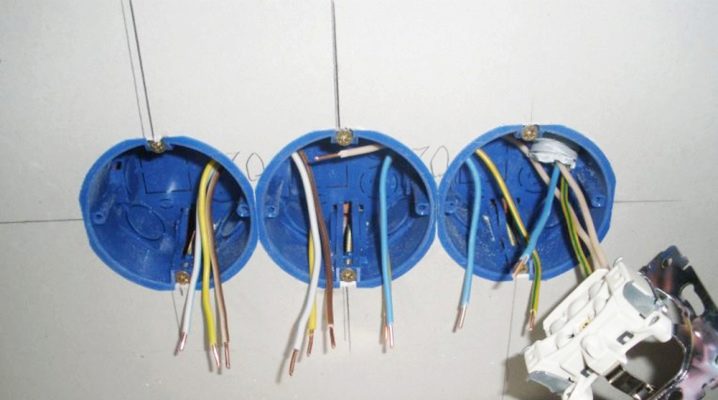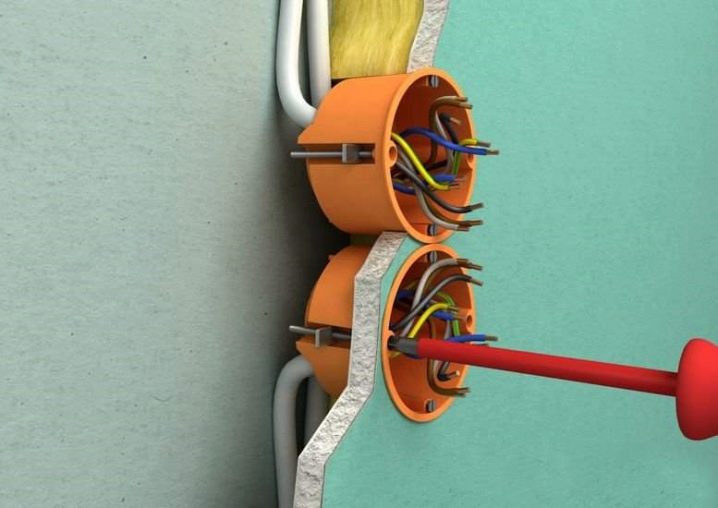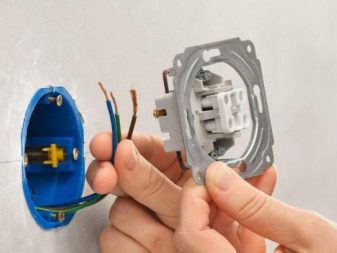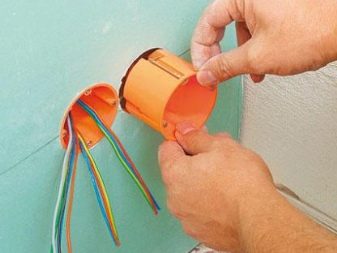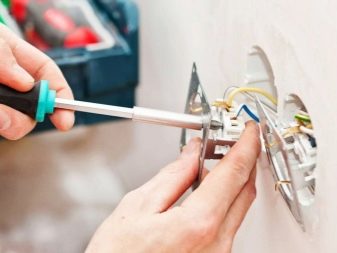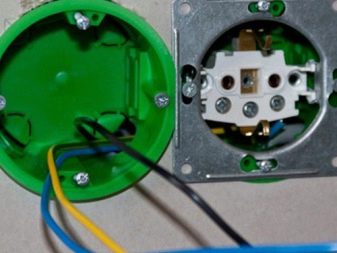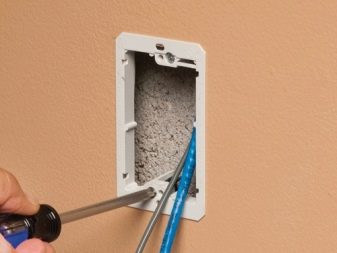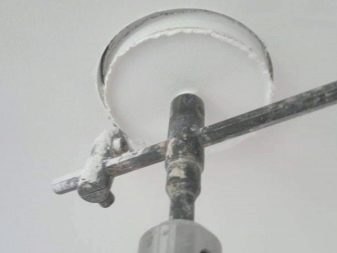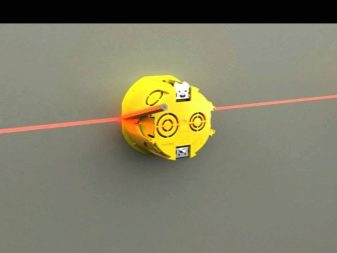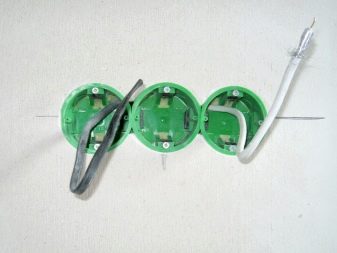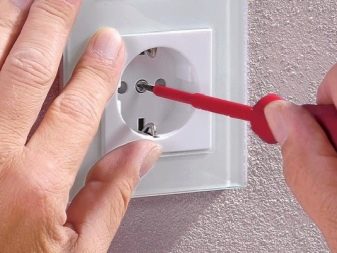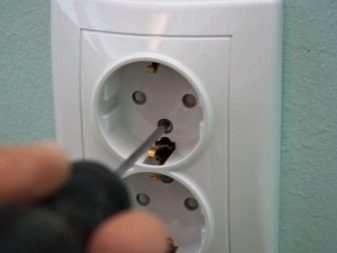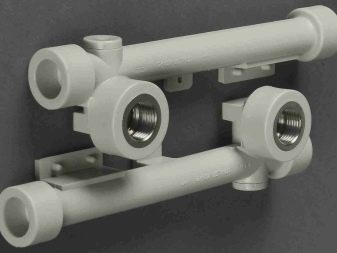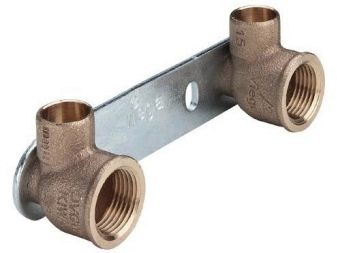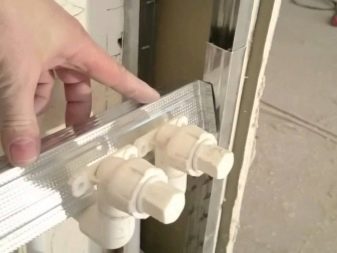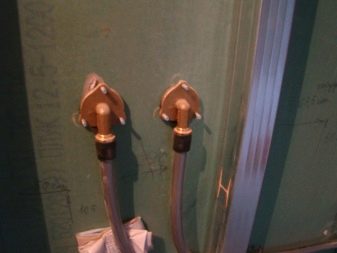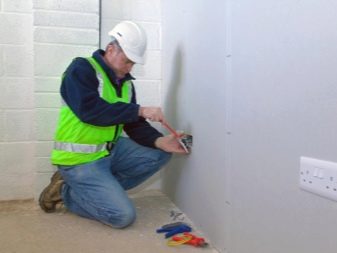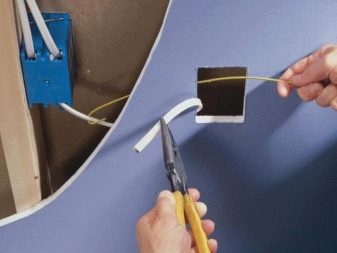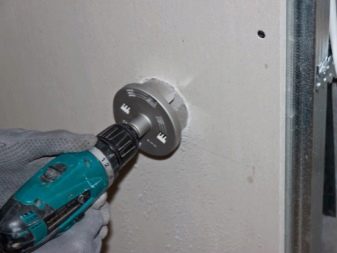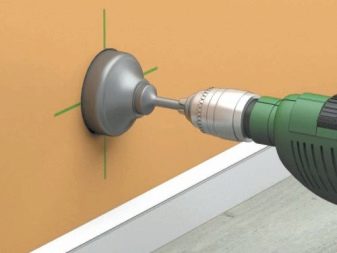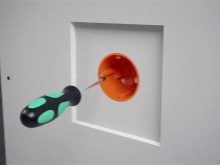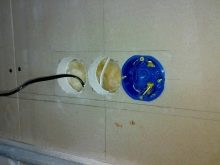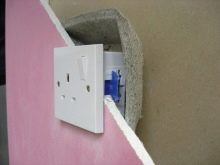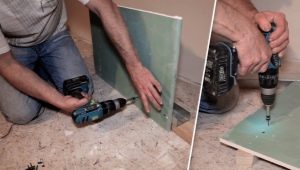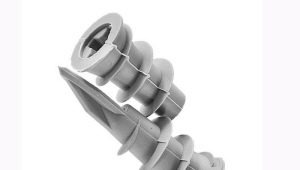The subtleties of installing sockets in drywall
Recently, plasterboard walls plasterboard is very popular. It is not only convenient and easy, but inexpensive, in addition, drywall helps to hide all the irregularities of the walls. However, it is a question of installing outlets. To do this correctly, you must carefully examine the issue.
Special features
Installing sockets in drywall is slightly different from other repair processes. For the successful implementation of the work necessary to properly select sockets and switches. And you also need to pay attention to podozetniki. They are slightly different from those installed in concrete or brick walls.
Their peculiarity is that they are complemented by presser feet, which are mounted on screws. Rotating them, you can move the legs along the body. As for switches and sockets, they come in standard sizes.And when purchasing all the necessary elements, it is imperative to check whether they match.
It must be remembered that the socket is an electrical device, which means that when installing it, you must follow the safety instructions. If you are not confident in your own abilities, then it is worth entrusting this work to specialists.
All installation work must be carried out when the electricity is turned off. All wiring needs to be checked for voltage. Do not touch bare wires. These are simple safety rules, which should not be forgotten, so as not to risk your life and health.
Instruments
To install the outlet in drywall, you must have available all the necessary tools.
- Perforator or drillWith the help of which all the necessary holes are made. Since the standard dimensions of the underside are sixty-eight millimeters, the diameter of the cutter on the drill or drill should be the same.
- Screwdrivers. One - figured to install the outlet, the other - the indicator to check the voltage.
- Marker, to accurately mark where the socket will be placed.
- Level. If desired, you can even use a short one, because the outlets are quite small in size.
- Chisel and hammer which use in those cases if it is necessary to chop a metal profile.
This minimal set of tools is quite enough to install sockets in a room covered with plasterboard.
DIY assembly
In order to install the outlet in drywall, you first need to make markup. The next step will be the installation on the drill pre-prepared nozzles. Then, with its help, a through hole is cut in the GRL. To ease the work a bit, you can start using a regular drill. And also worth considering that When working with a drill, do not press it hard, as this may lead to the formation of torn edges in the hole.
Fastening the outlet in a plasterboard wall can be done without a nozzle. It will be longer and harder. To do this, use a regular knife. They need to cut through the entire thickness of the drywall.
One of the most frequent problems that arise when installing an underside is the possibility of falling into the profile to which drywall is attached. To avoid this, you need to make additional space for the underlay. This can be done with a chisel and a hammer. For this, an interfering piece of the profile is cut down.
In order to put a double or triple outlet, you need to make a jumper between the holes.As in the case of a conventional model, before installing, you first need to make a markup. A place is chosen where the socket itself will be located, and its center is marked. Then a horizontal line is drawn through this point.
Next, seventy-two millimeters from the first point are measured and a mark is placed where the second hole will be. Marks are made as much as there are sockets in the unit, and the distance between them should be the same. Then the holes are cut. As a result, jumpers are four millimeters thick.
Installation of podrozetnikov
Before installation it is necessary to make a hole where the wires will pass. Further through the installation box you need to stretch the wire. It must be put into the hole and fixed with the help of the feet. But you also need to know that some boxes have a groove with a smooth transition. Therefore, it turns out that near the bottom of the underside of the foot, the foot is almost recessed into the groove. However, when the screw tightens, it slowly protrudes over the top. This allows you to secure the underside.
There is one more type of boxes having an equal groove. Here, in order for the legs not to interfere, special niches have been made for them, where they hide.For the installation of such podozetnika need to ensure that the legs when installing it into the hole were in the niches. Then the box turns in such a way that the foot is vertical and the foot from the bottom screw protrudes above the body itself. To prevent her from changing her position, she needs to be tightened with a screw.
Next you need to turn the underside of a hundred and eighty degrees, and pull the second paw out of the niche. And only then both legs reach out and fix the box.
Installation of sockets and switches
In order to install a switch or socket, first you need to de-energize the wiring and shorten so that there is a margin of up to fifteen centimeters. After you need to clean its ends. The top part is removed from the switch and the bolts are loosened. It is necessary not to confuse them when fixing. This also applies to three-conductor wiring, which has a ground wire. If there is no special contact for him in the socket or switch, he simply hides inside the box. Before this, it must be well insulated.
When connecting the zero and phase wires, it is important to secure the bolts on the contacts.After the connection is made, you must install the inside of the outlet or switch in the socket. Then it is fixed with screws.
Water outlet
Installation of water sockets allows you to connect the supply water to the right devices. The principle of operation of such an element of the electrical network is to transfer the pressure of water from the water supply system to a specific faucet. What allows to change mixers at any time. Water sockets are of different types.
- Single, which are used to connect only one line.
- Solid double - they are used to connect two highways together.
- Double, having a relief board. Such water sockets are installed at some distance from each other. They are attached to a special bracket.
Materials required for water outlets are non-ferrous and ferrous metals. To install them, the distance between the ends should be not less than fifteen centimeters. The diameter of the hole in the wall should correspond to the size of the desired part. It is imperative that before starting work it is necessary to mark up and then drill out the holes. There should be three of them.
Next to the back surface of the water outlet, rubber is glued and only then it is attached to the wall and tightened with self-tapping screws. The space that formed between the wall and the socket can be filled with putty.
After the socket is fixed and connected to the network, you can safely use it.
If everything is done correctly, the sub-workers will not be loosened over time, and there will be no need to carry out installation work again.
Tips and tricks
If you install the outlet yourself, be sure to listen to the advice of experts.
Installation is best done before the drywall is installed. First install the frame of the metal profile, which is fixed on the wall surface. To protect the wires, you can use a corrugated pipe.
To bring the current to the outlet, you need to use a three-core cable having a double winding. If used to fix the pieces of copper wire, it will give the design reliability.
And also it is worth remembering that, installing sockets, you need to take into account not only their needs, but also accepted by all building codes. For example, you need to install an outlet no less than thirty centimeters above the floor. For a switch, the height from the floor should be approximately ninety centimeters, and not less than fifteen centimeters from the door.
But if electrical appliances are in other places, then the sockets can be located where it is most convenient. For example, in the kitchen it will be most convenient to place them directly above the table. The location of the outlet should not be less than one hundred and twenty centimeters from the floor, and not less than thirty centimeters from the door. This will allow you to connect the devices without carrying.
But also, if the TV is placed directly on the wall, then you can hide the outlet behind it. This placement is pleasing and practical, and attractive appearance. In the bathroom it will be correct to place the socket sixty centimeters from the floor. But if it serves to connect the washing machine, then the height must be at least one meter.
Be sure to know that to install the outlet in the nursery, they must be located at a height inaccessible to the kid. And you can also use sockets with a special mechanism, such as lockable curtains.This will protect the child from electric shock. You can additionally buy special pads on sockets. They are bright, beautiful and may well become part of the interior of the nursery.
It is worth remembering that the fasteners can not be clamped and unclamp several times. This may cause an immediate short to the socket.
Installing sockets in drywall will not take much care of the owner. Even if a person wants to solve this problem on their own and do the installation with their own hands. During the installation of electrical wiring is always worth remembering the rules of safety and observe them in work.
If you need help, it is better to turn to specialists who will cope with the work many times faster and will act more confidently.
For information on how to install podozetniki, see the next video.
